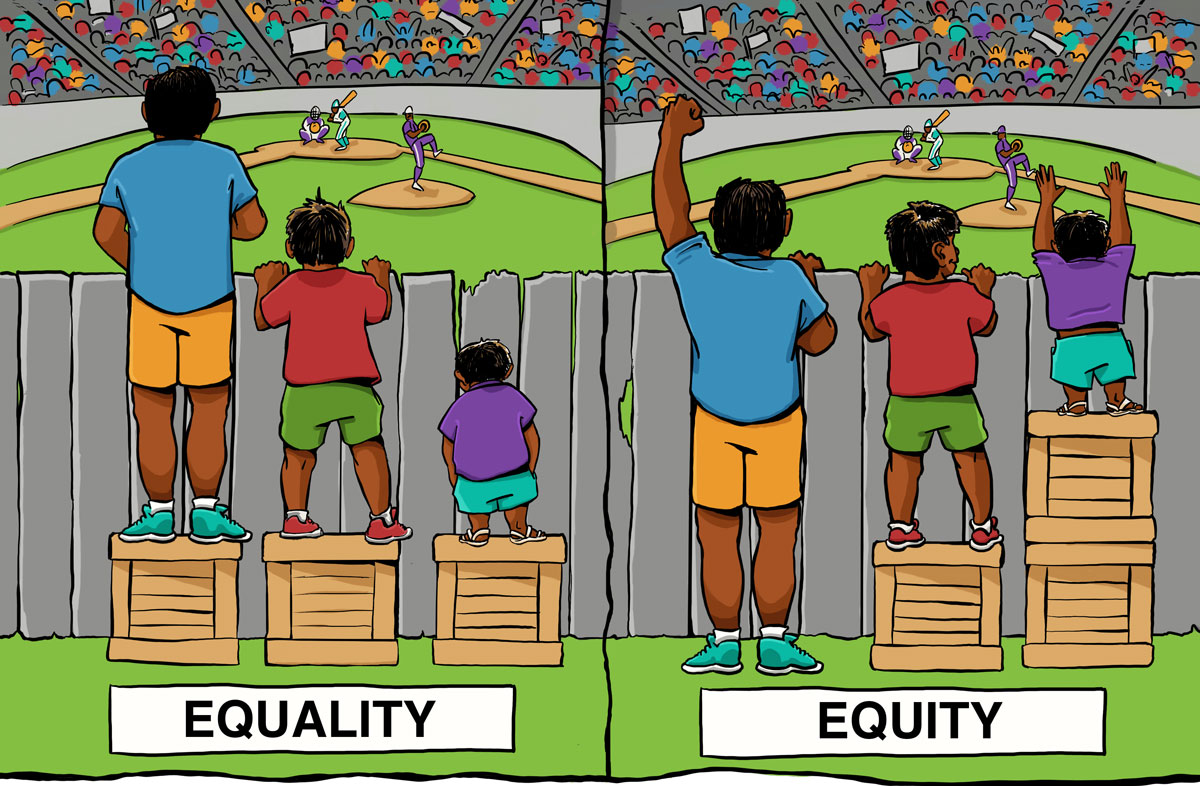
24 Jul Designers and Equality: Ethical Considerations from the International Council of Design
The Graphic Artists Guild is a member of the International Council of Design, an organization representing 120 design organizations in 50 countries consisting of design associations, educational institutions, and promotional bodies. The Council actively advocates for design (and designers) and promotes design professionalism through best practices papers, whitepapers, communications, and global conversations through both in-person and (in the age of COVID) virtual meetings.
As part of the review of their Moral Code of Professional Conduct for Designers, the Council published a series of meditations on the role of design (and the designer) in addressing big picture issues. The third in their series, “Meditations on Equality,” was written to spur designers and design associations to consider their own responsibility in addressing issues of social inequality. While the article was written during the Spring, it was published in late May, and the timing adds to the discussion on the issues raised by the Black Lives Matter movement.
The article addresses the role of design in broad strokes and includes a comprehensive reading list of background materials. It focuses on why designers should care about equality, designing for equality, hostile design (when design works against people), the global south and colonization, and addressing inequality in design through human rights approaches (focusing on artificial intelligence).
The full article can be read on the Council’s website: Explorations in ethical design | meditations on equality.
Excerpt from the article:
“While designing for inclusivity is a practical consideration within the design process addressing who you are designing for, designing for equality is a political consideration, entailing a conscious effort to redress the context you are designing in. When we design with equality in mind, we consider not only the diversity of people present, but we try to understand the systems and environments in which these people live, and why aspects of these systems do not make things fair for all. The complexity of the world right now — due to webs of interrelated systems (economic, environmental, social) can make each decision a designer makes a high stakes game. Designers are not lawyers or ethicists, and there are so many variables to consider with each new project or problem. Using design to rectify systemic inequalities might mean establishing professional codes of conduct, values, and ethics that are inclusive of a wide spectrum of people that can be applied locally and be instituted at a policy level by governments across a range of countries and contexts.”
— Explorations in ethical design | meditations on equality, International Council of Design
Illustration via Interaction Institute for Social Change | Artist: Angus Maguire
For an interesting article on the evolution of the concept and image, read “The Evolution of an Accidental Meme.”
